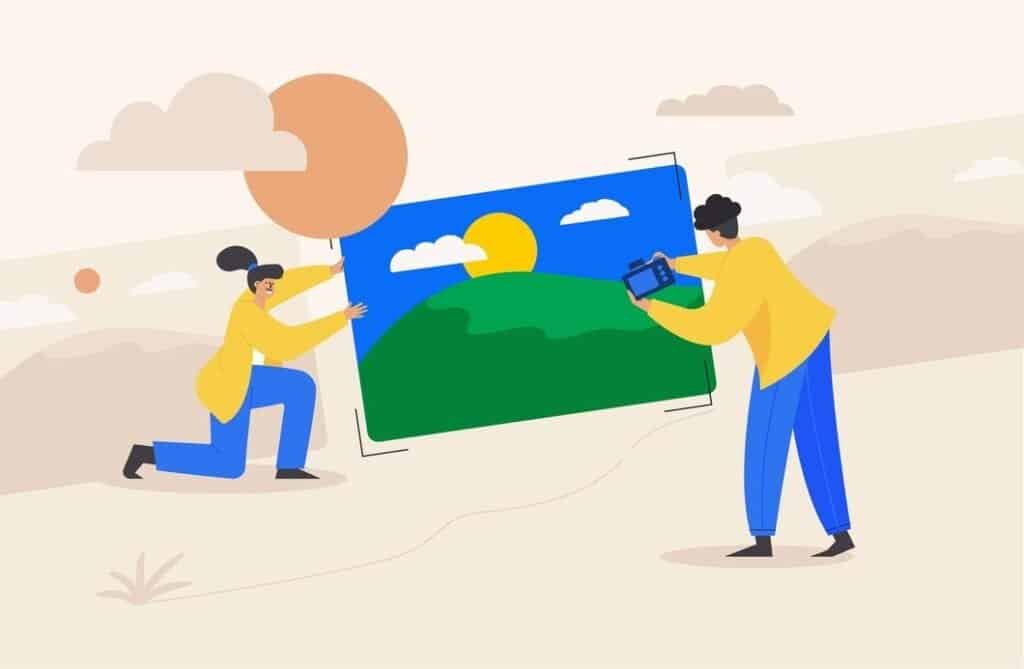Flipping photos is a simple yet powerful editing technique that can transform your images. Whether you’re fixing a selfie, creating artistic effects, or adjusting orientation, knowing how to flip a photo is an essential skill for anyone working with digital images.
What is Image Flipping?

Image flipping involves reversing a photo horizontally or vertically. This technique is useful for correcting mirrored selfies, creating symmetrical compositions, or adjusting text orientation in images. It’s just one of many techniques for editing product photos that can enhance their appeal.
Use Online Image Flippers
Online tools offer a quick and easy way to flip images without installing software. Popular options include:
- Canva
- Photopea
- ProductScope AI
To flip an image online:
- Upload your photo
- Select the flip option (horizontal or vertical)
- Download the flipped image
Flipping Images on Desktop
Built-in photo editors:
- Windows Photos app: Open image > Edit > Flip
- Mac Preview app: Tools > Flip Horizontal/Vertical
Professional software:
- Adobe Photoshop: Image > Image Rotation > Flip Canvas Horizontal/Vertical
- GIMP: Image > Transform > Flip Horizontally/Vertically
Advanced Image Flipping Techniques

Flipping images is a fundamental technique in graphic design and photography, but advanced methods can add creativity and depth to your visuals. Here are some sophisticated techniques to consider:
1. Partial Flips
- Use Selection Tools:
- To create partial flips, start by selecting the area of the image you want to flip using selection tools like the lasso, rectangle, or elliptical selection tools. These tools allow for precise control over the portion of the image you wish to manipulate.
- After making the selection, copy the selected area to a new layer. This separation enables you to flip just that section without affecting the entire image.
- Flip the selected area horizontally or vertically using the “Flip Horizontal” or “Flip Vertical” option in your editing software. This technique is particularly useful for creating dynamic compositions, such as transforming backgrounds or emphasizing specific details without altering the whole image.
2. Mirror Effects
- Duplicate, Flip, and Blend Layers:
- Creating mirror effects involves duplicating your image layer and then flipping it to produce a symmetrical appearance. Start by selecting the layer in your image editing software and duplicating it.
- Flip the duplicated layer using the flip options available in your software. Position the flipped layer adjacent to the original to create a mirror effect.
- To enhance the effect, experiment with blending modes and opacity settings. Adjusting the transparency of the flipped layer can create intriguing visual dynamics, allowing parts of the original image to show through. This technique is often used in artistic compositions or to create visually striking logos and designs.
3. Combine Flips with Rotations or Other Edits
- Create Unique Effects:
- Combining flips with rotations can yield unique and eye-catching results. After flipping an image or a section of it, consider rotating it at various angles to introduce movement and depth. For example, flipping an object and then rotating it slightly can make it appear more dynamic and three-dimensional.
- In addition to rotations, incorporate other edits such as color adjustments, filters, or textures. Combining multiple effects can transform a simple flip into a complex design element. For instance, applying a blur effect after flipping can create an impression of speed or motion, enhancing the overall visual impact.
- This technique is particularly effective in graphic design, where layering various transformations can lead to innovative and visually appealing outcomes.
Final Thoughts
By mastering these techniques, you’ll be able to flip images effortlessly across various platforms and applications, enhancing your photo editing skills and creative possibilities. Remember, flipping is just one aspect of image manipulation. For a more comprehensive approach to image editing, consider exploring product photography tips to improve your overall visual content.
When working with product images, flipping can be particularly useful for creating consistent layouts or highlighting specific features. However, it’s important to maintain authenticity, especially when showcasing e-commerce product images. Always ensure that flipped images accurately represent the product.
Ready to elevate your image editing experience? Try ProductScope AI for seamless image flipping and advanced editing features that will take your visuals to the next level!
Sign Up for ProductScope AI Today!
